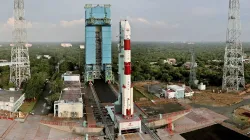ISRO gears up for another shot at launching European Space Agency's Proba-3 mission today, count down begins
ISRO's PSLV-C59 was initially scheduled to launch on December 4. However, it was postponed due to an anomaly in the spacecraft. The space agency is reattempting to launch the mission today.

The Indian Space Research Organisation (ISRO) is all set to launch Europe's Proba-3 mission again today. The launch will take place using the Polar Satellite Launch Vehicle (PSLV-C59) and is scheduled for 4:12 PM IST. This launch follows a delay that occurred earlier when a problem was detected in the spacecraft just before its planned launch on December 4. The launch was set for 4:08 PM on Wednesday from a local spaceport. In an update shared the following day, ISRO announced that the countdown for the PSLV-C59/Proba-3 mission had begun, along with the new lift-off time. NewSpace India Ltd, a commercial arm of ISRO, has been tasked with this project by ESA.
The Proba-3 mission involves two satellites named Coronagraph, weighing 310 kg, and Occulter, weighing 240 kg. These two satellites will work together closely, flying in perfect formation to study the Sun's outer atmosphere, known as the Corona. This area of space is much hotter than the surface of the Sun itself and is crucial for understanding space weather.
For ISRO, this mission will help gather important information for future scientific studies about the Sun, following the successful launch of their maiden mission, Aditya-L1, in September 2023. Proba-3 is considered a technology demonstration venture, showcasing how well the two satellites can operate together. The satellites will work as one unit and will launch stacked on top of each other.
The PSLV-C59 rocket that will carry them is 44.5 meters tall and has been used multiple times before, making this flight its 61st. After launching, it will take the two satellites about 18 minutes to reach their designated orbit.
Once in space, the two satellites will fly about 150 meters apart, with the Occulter satellite blocking the Sun’s light so that the Coronagraph can study the surrounding atmosphere. This mission opens up new possibilities for scientific observations and will contribute significantly to our knowledge of solar activity.
ALSO READ: Asteroid collides with Earth, turns into fireball over Russia | WATCH